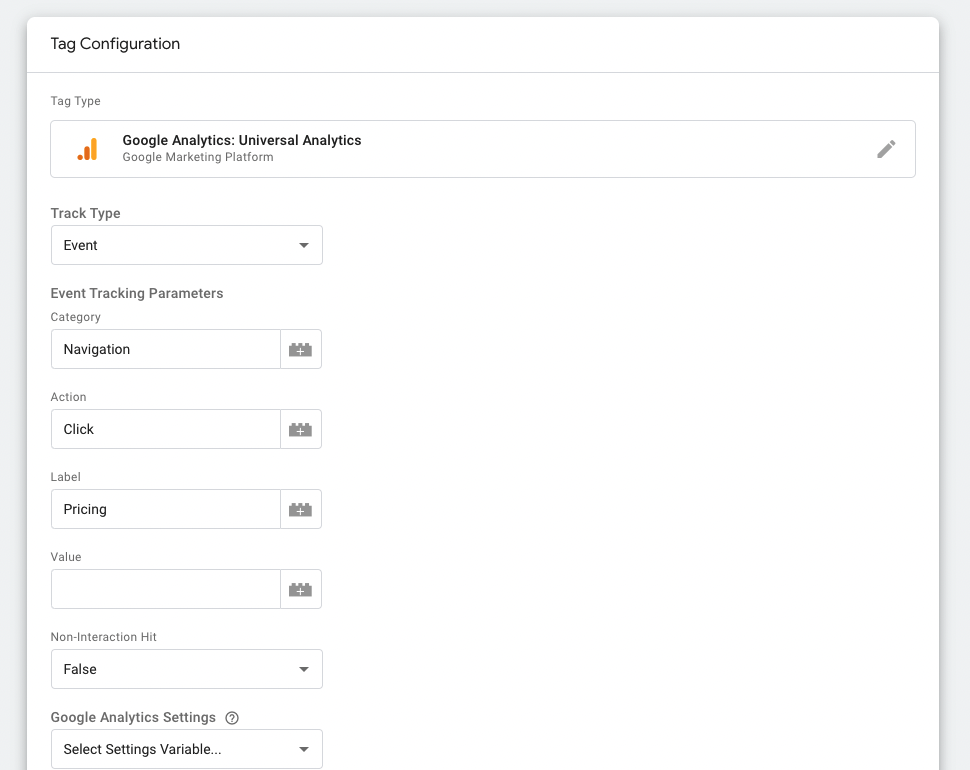The Ultimate Guide To Google Analytics Event Tracking
Table of ContentsThe Basic Principles Of Google Analytics Event Tracking Getting The Google Analytics Event Tracking To Work6 Easy Facts About Google Analytics Event Tracking ExplainedHow Google Analytics Event Tracking can Save You Time, Stress, and Money.The Best Guide To Google Analytics Event TrackingAll about Google Analytics Event Tracking

If you're mosting likely to establish event monitoring manually, after that you're going to need to include some additional code to the elements you wish to collect information from. The code you're going to collaborate with will look something such as this: There are four parts within that code snippet that you're mosting likely to require to specify yourself: occasion, Classification, event, Activity, occasion, Label and occasion, Value.
As you can see, 2 of these are needed (classification and activity) while label and value are optional. All of it relies on the kind of details you want passed on back to Google Analytics when a user clicks the defined aspect (Google Analytics Event Tracking). It will certainly be a lot easier to specify these components if you analyse your website and make a decision which elements/actions you wish to track
More About Google Analytics Event Tracking
Now, you'll be asked to specify the and and you'll want to choose from the drop-down menu that appears when you click on. This will raise the same event tracking parts we looked at earlier, which you'll require to fill in. When you've defined these, you can relocate to the second box and choose the trigger that will terminate your tag.
On the following screen, you'll additionally have a field for calling your trigger and, if you click on package, you'll see a listing of the various triggers you can select. In this instance, we desire to select and afterwards pick the alternative below. You'll set the trigger to only fire when an element is clicked with a Link that consists of the.
Every website talks. Prior to data analytics, we couldn't hear the voices of our internet sites. Exactly how do you recognize what your web site is claiming? Simple - Occasion tracking! Event tracking gives you a photo of exactly how users engage with your internet site and business (Google Analytics Event Tracking). Do you want to know even more? After that, check out on as we explore every little thing you need to recognize, including what it is, why you ought to track events, just how to handle events data, and other appropriate FAQs you may have.
Google Analytics Event Tracking Can Be Fun For Anyone
You can switch in between your event groups, actions, and labels in the Top Occasions report. The Event Pages report shows the pages where occasions are caused.
Events in Google Analytics have four major aspects. Google Analytics makes use of these codes to track customer communications and team learn the facts here now them right into occasion reports (Google Analytics Event Tracking).
A listing of the parameters you can track on your site is on the. After examining all needed areas, you can click "X" to shut the window and return to the Summary menu on the.
The 7-Minute Rule for Google Analytics Event Tracking

Picking "False" will protect against that session from being a bounce. If you have not done so, you might need to establish a variable in the Google Analytics Setups box. Click "New Variable ..." if you can't locate one to select. Hereafter, enter your GA monitoring ID in the Monitoring ID field.
To do this, comply with the next series of actions: After configuring the areas, choose the "Triggering" section. When configuring your brand-new trigger, click the "+" button, then the "pencil" switch, then choose your trigger kind.
Indicators on Google Analytics Event Tracking You Should Know

When it familiarizes which sections and aspects are directing clients through your conversion channel, you still will not understand. So, without occasion tracking, GA records will just wikipedia reference count check outs as single-page sessions, also if individuals invest a great deal of time on one page and involve with it substantially (and a bounce).
But exactly how does event tracking accomplish this?Single-page sessions known as bounces start and wrap up on the very same web page. Without occasion tracking, GA will categorize a customer's see as a bounce if they do not navigate to another page, regardless of how they communicate with it. visit A video-rich page can have a higher bounce price if events are not tracked.
Get This Report on Google Analytics Event Tracking
For GA to take occasion hits into account when determining bounce prices, you should choose "Non-interaction occasion" as "False" throughout the GTM configuration. Establishing "occasion objectives" with event action is a superb method to track user activities you worth very, such as new lead entries or click a phone call to action.